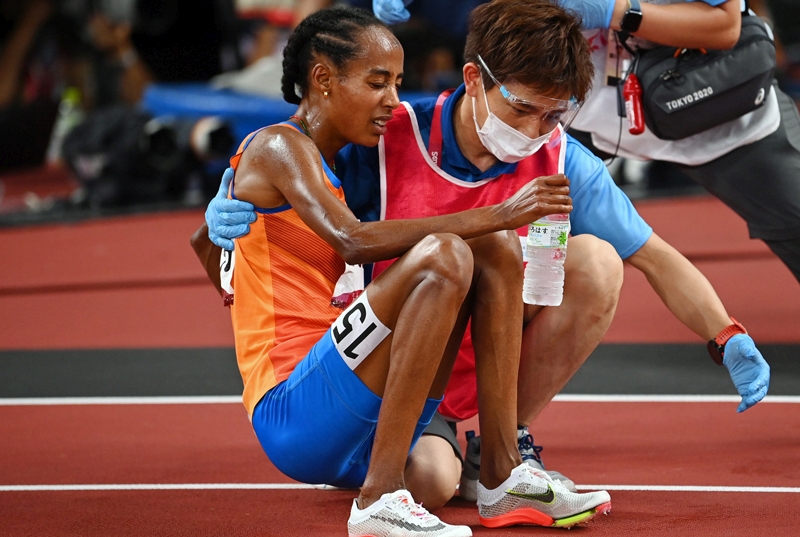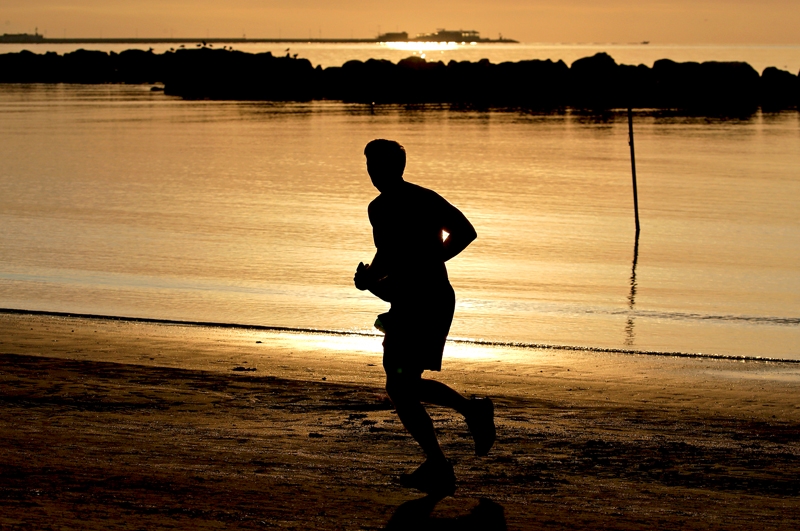The price of hard racing: are you properly recovered?

Andrew Hamilton explores the link between ultra-distance racing, recovery and immunity, and explains what athletes can do to maximise recovery and minimise the chance of illness
Full and rapid recovery is essential for all athletes, but especially for those involved in regular competition, where the stresses and strains of racing impose a high physiological loading on the body. The obvious question to ask is how long does it take to properly recover? The answer of course depends on numerous factors such as how long and hard the race was, your current fitness level, how much rest you have following a race, your recovery nutrition and even your age (younger athletes tend to recover more rapidly than those who are older).However, ‘recovery’ is a multi-faceted concept with many components, which means that how quickly recovery is achieved also depends how recovery is assessed. For example, assuming no further training/competition is undertaken, full rehydration following a long event in hot weather can be achieved within 24 hours. Full recovery of the muscles’ glycogen stores following a marathon or other similar-length event can usually be achieved in 2-3 days. The repair of exercise-induced muscle damage (and soreness) can take up to week. However, there are even longer-term aspects of recovery; a very hard or arduous race/event can be psychologically sapping, meaning an athlete may not be mentally ready to compete again for a good few weeks. The biochemical and hormonal impacts of extreme exertion can also make themselves felt for a considerable period after an event, impacting on functions such as immunity (a good barometer of health and long-term recovery).
The long haul to full recovery
The conventional wisdom is that with sufficient rest and the right nutrition, most athletes can recover from a short-ish race (up to an hour’s duration) in a few days – maybe a week or 10 days at most. For longer races such as marathons, full recovery might take a good two to three weeks. However, some research suggests that recovery from very long events – eg ultramarathons, long-distance triathlons and multi-day cycling or adventure races – could take much, much longer, possible many weeks.In one study by British and Norwegian scientists, researchers looked at the effects of participating in a cross-country skiing stage race - the ‘Tour de Ski’, where participants race from 4-25kms everyday for a week(1). The researchers investigated the incidence of subsequent illness, training feedback, and race performance following the Tour de Ski by gathering together and analysing self-reported training and illness data from 44 male and female elite cross-country skiers over two or three seasons per athlete. In particular, the incidence of Illness, the training loads undertaken by the athletes, and their performances in international competitions were compared when the athletes had competed in the Tour de Ski in one season but not in another season.
The first key finding was that no less than 48% of athletes reported becoming ill during or in the days immediately after taking part in the Tour de Ski! This was a 3-fold higher rate of illness when athletes had not competed in this race. Another finding was that in the male skiers, race performance in subsequent Olympics/World Championship races was significantly worse for at least six weeks following Tour de Ski than when the skiers hadn’t participated in the Tour de Ski. Significantly however, the female skiers seemed to fare much better; not only did they suffer lower rates of illness after the Tour de Ski, they also experienced much less of a performance decline in subsequent Olympics/World Championship races.
Digging a little deeper into this topic, a 2017 study reviewed the current state of evidence on the link between immunity and periods of intense and/or repeated bouts of exercise(2) Among the conclusions reached by the researchers was that the general trend during exercise recovery is that short bouts of moderate-intensity exercise have little effect on (or might even enhance) cellular immune function, whereas prolonged bouts (over 90 minutes) of heavy exertion appear to reduce the normal functioning of all major immune cells types. These effects may leave athletes susceptible to illness during recovery from competition or heavy training.
As an example, another study found that one hour of cycling at 50% VO2 max (easy) increased immune function by raising neutrophil oxidative burst activity. However, the same duration of cycling at 80% VO2max (hard) reduced this activity(3). Yet another study concluded that during the early stages of recovery after exercise, neutrophil bactericidal activity continues to increase after 40 minutes to one hour of moderate-intensity exercise, whereas it remains impaired after exhaustive or prolonged exercise(4). Summarising the current findings on post-exercise immunity changes in athletes, the researchers in the 2017 produced a graphic, which is shown in figure 1. A key feature to note is the relatively large number of studies on consecutive-day exercise (column C) where a decline in key measures of immunity was observed (blue boxes).
Figure 1: Evidence for changes in the immune system following repeated exercise bouts and days to months of intense training(2)

Evidence heat map comparing differences in immune responses to two vs. one exercise bout on the same day (A), short vs. long recovery between bouts on the same day (B), consecutive days of exercise (C), and weeks (D) or months (E) of intensified training. Numbers represent the number of studies demonstrating an increase/greater change (red), no difference (green), or decrease/smaller change (blue) compared with the first bout of exercise, long recovery, before training, or healthy athletes.
Implications for athletes
Although the phenomenon of post-exercise immune suppression after prolonged and vigorous exercise is well documented, the fact that almost half of the Tour de Ski athletes became ill after competing is quite surprising. One possible explanation for this is that the race takes place in mid winter when there are more upper respiratory infections doing the rounds. Also, we know that day-to-day immunity is often lower as a result of reduced levels blood vitamin D(5). (low vitamin D is strongly associated with immune dysfunction and studies show vitamin D levels in the body drop during the winter due to the lack of strong sunshine).Another surprising finding is that in the male athletes at least, subsequent performance was depressed for at least 6 weeks following the Tour, which indicate that recovery was taking a good deal longer than the athletes had expected. Together these findings suggest that (particularly male) athletes participating in hard, multi-day events need to allow ample recovery time before racing again and should (as far as possible) to maintain high levels of immunity.
In the study above(2), the researchers also summarised possible strategies that can help ameliorate post-exercise immune suppression They concluded that there is solid evidence that the following strategies are supported by good evidence:
- *Consuming carbohydrate before and during exercise.
- *Consuming protein and carbohydrate immediately after exercise and in the following few hours.
- *Consuming a higher-than-normal protein diet (3g per kilo per day).
- *Ensuring adequate sleep in the run up to and after an event.
References
- Scand J Med Sci Sports. 2015 Dec;25(6):846-53
- J Appl Physiol (1985). 2017 May 1;122(5):1077-1087
- Int J Sports Med 20: 128–135, 1999
- Exerc Immunol Rev 8: 49–100, 2002
- J Investig Med. 2011 Aug; 59(6): 881–886
You need to be logged in to continue reading.
Please register for limited access or take a 30-day risk-free trial of Sports Performance Bulletin to experience the full benefits of a subscription. TAKE A RISK-FREE TRIAL
TAKE A RISK-FREE TRIAL
Newsletter Sign Up
Testimonials
Dr. Alexandra Fandetti-Robin, Back & Body Chiropractic
Elspeth Cowell MSCh DpodM SRCh HCPC reg
William Hunter, Nuffield Health
Newsletter Sign Up
Coaches Testimonials
Dr. Alexandra Fandetti-Robin, Back & Body Chiropractic
Elspeth Cowell MSCh DpodM SRCh HCPC reg
William Hunter, Nuffield Health
Keep up with latest sports science research and apply it to maximize performance
Today you have the chance to join a group of athletes, and sports coaches/trainers who all have something special in common...
They use the latest research to improve performance for themselves and their clients - both athletes and sports teams - with help from global specialists in the fields of sports science, sports medicine and sports psychology.
They do this by reading Sports Performance Bulletin, an easy-to-digest but serious-minded journal dedicated to high performance sports. SPB offers a wealth of information and insight into the latest research, in an easily-accessible and understood format, along with a wealth of practical recommendations.
*includes 3 coaching manuals
Get Inspired
All the latest techniques and approaches
Sports Performance Bulletin helps dedicated endurance athletes improve their performance. Sense-checking the latest sports science research, and sourcing evidence and case studies to support findings, Sports Performance Bulletin turns proven insights into easily digestible practical advice. Supporting athletes, coaches and professionals who wish to ensure their guidance and programmes are kept right up to date and based on credible science.









